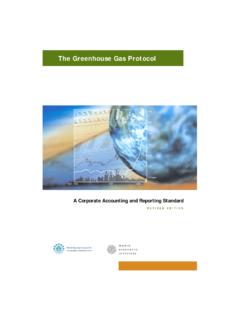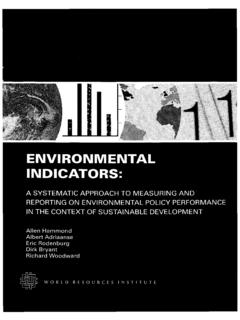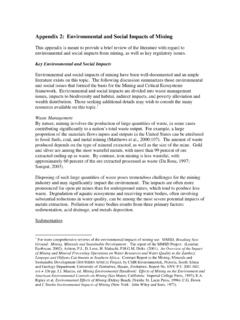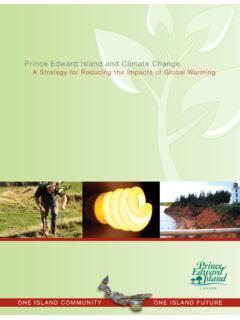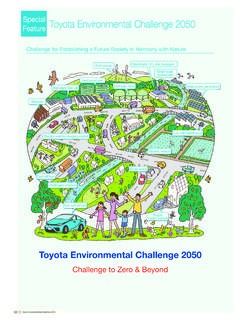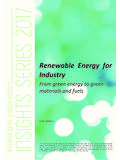Transcription of Republic Act 9513: Renewable Energy Act of 2008
1 Country Perspective Philippines Pete H. Maniego, Jr. Chairman Fair FIT Workshop WRI & ADB 21-23 February 2012 Outline of the Presentation of Renewable Energy in the Philippines Act of 2008 NREB, its Functions and Challenges System Determination Impact of Climate Change in the Philippines FIT Support from International Institutions of Implementing the FIT now of FIT and other RE Mechanisms geothermal > 4,000 MW Wind resource > 76,600 MW Hydropower > 10,000 MW Solar > 5 kWh/m2/day Ocean > 170,000 MW Biomass > 500 MW (bagasse & rice hulls only) Largest producer of coconut oil Ranks 10th in world sugarcane production PHILIPPINES: Vast RE Potential Source: Renewable Energy Management Bureau, DOE 3 World s 2nd largest producer of geothermal Energy at 2,000 MW Largest wind power producer in Southeast Asia at 33 MW Installed hydropower generation capacity of over 3,300 MW Host to the following.
2 First solar wafer fabrication plant in Southeast Asia - Sunpower First continuous biodiesel plant in SEA First sugarcane-based ethanol and cogeneration project in SEA PHILIPPINES: A Significant RE Producer Source: Renewable Energy Management Bureau, DOE 4 Accelerate the development of the country s Renewable Energy resources by providing fiscal and non-fiscal incentives to private sector investors and equipment manufacturers / suppliers. Signing of the Renewable Energy Act on 16 December 2008 One of the most comprehensive and forward looking RE law in the world Provides substantial fiscal and non-fiscal incentives 6 Incentives Under the RE Act Renewable Energy Law (RA 9513) Fiscal Incentives Non-Fiscal Incentives Renewable Portfolio Std FIT Scheme Net-Metering Green Energy Option 7 Summary of Incentives Incentives RE Developers RE Commercialization 7-Year Income Tax Holiday Yes Yes Duty-free Importation Yes Yes VAT-free Importation No. Tax Credit Yes Special Realty Tax Rate <= % Yes Net Operating Loss Carryover Yes Yes 10% Corporate Tax Rate after ITH Yes Accelerated Depreciation Yes Yes Zero Percent VAT on RE Sales & Purchases Yes Yes Cash Incentive = 50% of UC for Missionary Electrification Yes Tax Exemption on Carbon Credits Yes Tax Credit on Domestic Capital Equipment & Services Yes Yes 8 Incentives RE Developers Electricity Suppliers End -users Renewable Portfolio Standards Yes Feed-In Tariff on Emerging Technologies Yes Yes Renewable Energy Market & Certificates Yes Green Energy Options Yes Net Metering Yes Government waives share of proceeds on RE micro-scale Projects <= 100 kW Yes Exemption from Universal Charge Yes Payment of Transmission & Wheeling Charge = Average kWh rate Yes Tax Rebate for RE Components Yes Financial Assistance Program Yes Incentives for Host Communities Yes 9 Major Challenge How to balance.
3 Attracting and promoting investment in Renewable Energy -While- Minimizing the burden to the end-users NREB Challenges Feed-In Tariff which would: Allow RE developers to recover their investments and provide them with internationally acceptable ROI's during the FIT period, Accelerate the development of competitive RE technologies, and Not unduly burden the consumers with heavy pass-on charges. 14 NREB Challenges Installation Targets which are: In compliance with the Renewable Portfolio Standards; and Consistent with Philippine Energy Plan and the National Renewable Energy Program Renewable Energy Portfolio Standards which would: Promote the diversification of Energy supply, Help reduce GHG emissions; and Ensure compliance from the mandated participants 15 NREB Challenges Green Energy Option which would: Provide End-users the option of choosing RE Resources as their source of Energy Net Metering which would: Give incentives to End-users to generate electricity from eligible on-site RE generating facility and delivered to the local generation grid; Generate employment for installers of solar panels, micro wind turbines and other building-installed RE equipment 16 Arguments vs.
4 FIT The Philippines already gets more than 30% of its power supply from RE sources, The country has minimal per capita GHG emissions ( MT for PH vs. 4 MT global average), and RE power is more expensive than conventional power and would increase the already high electricity rates. 17 Feed-in Tariff Mechanism 18 Elements Provisions under the RE Act, IRR & FIT Rules Payment Guaranteed, on a fixed rate per kWh Coverage Emerging technologies- biomass, solar, run-of-river hydro, ocean and wind, excluding generation for own use For projects which enter into commercial operations after effectivity of the FITs with certain exceptions for existing plants On-Grid areas only Mandated duration Initial FITs- 20 years; Minimum 12 years Connection to Grid Priority connection, purchase, transmission and payment by grid system operator NGCP to determine maximum penetration limits for intermittent Res PEMC and NGCP to implement technical mitigation & improvements to ensure reliability of transmission Dispatch Priority and must dispatch The FIT Determination Process Received initial proposal from each RE association In accordance with the ERC FIT Rules Obtained comments from third party consultants of the DOE Applied uniform financial model for all technologies NREB conducted consultation and verification as follows: Met with developers from January 2009 to April 2011 Verified the figures from project submissions by developers to the DOE Verified from actual cases and decisions by the ERC Applied international and historical benchmarking on project costs, O&M, and technical assumptions In conformity with ERC Rules of Practice & Procedure on Rule-making.
5 Representative project Single rate for each technology initially. Differentiated FITs per technology to be submitted as a supplement to the initial Petition FIT Application with ERC was submitted on 16 May 2011 Proposals Consultation and Evaluation Recommendations How Did We Compute for the FIT? O&M and G&A costs Corporate Income Tax and Local Taxes Target Equity IRR Annual capex and Debt service After-tax free cash flow Equals = X Less Production volume FIT (?) Revenues Using Excel s Goal-Seek function Present value of cash flows to equity investor equals equity investment cost Net Capacity Factor and Installed Capacity 20 + = Construction Cost Debt Equity Construction period Operating period Initial Feed-in Tariffs (FITs) in Php/kWh Technology Proposed by RE Developers NREB Approved June 2010 Oct. 2010 Nov. 2010 April 2011 April 2011 Degression Rates Biomass1/ after 2nd year Run-of-River Hydro2/ after 2nd year Solar3/ 6% after 1st year Wind after 2nd year Ocean None 1/ For a solid biomass project 2/ For a project with capacity between 1MW and 10MW 3/ For a ground-mounted project with more than 500kW capacity 21 Parameters and Assumptions Particulars ROR Hydro Biomass Solar Wind Ocean Representative Size (MW) Project Cost (US$ per kW) 3,565 3,039 3,400 2,758 12,637 EPC Cost (US$ per kW) 2,341 1,982 2,647 1,983 9,752 Net Capacity Factor (%) O&M Cost (US$000/unit/year) 400 1,115 530 100 25 Fuel Cost (Php per ton) 1,297 Feed Rate (kWh / ton) 700 Equity IRR (%) After-Tax WACC (%) FIT (Php per kWh) 22 The initial installation targets are not limits or caps.
6 Rather, these targets would be the basis in reviewing and re-adjusting the FIT rates in accordance with the FIT Rules (Sec. 7, ERC Resolution NO. 16, Series 0f 2010). Installation Targets Installation Targets in MW Technology Proposed by RE Developers DOE NREB Approved (April 2011) DOE Certification to ERC (July 2011) June 2010 November 2010 Biomass 357 416 233 250 250 Run-of-River Hydro 131 131 170 250 250 Solar 235 542 20 100 50 Wind 710 710 220 220 200 Ocean 10 10 10 10 10 TOTAL 1,443 1,809 653 830 760 24 Maximize Deployment of Lower Cost RE DOE in consultation with NREB had calibrated the 3 year installation targets to maximize the deployment of more cost competitive alternatives - hydro & biomass Beyond this, a diverse mix of technologies is critical to the power system s reliability ( Mindanao's Energy mix is highly dependent on hydro; sustainability of biomass for fuel over 20 years). Technology Proposed (MW) NREB Approved (MW) Increase /(Decrease) Solar 235 50 (78%) Wind 710 200 (72%) Hydro 131 250 90% Biomass 357 250 (30%) Ocean 10 10 - TOTAL 1,443 MW 760 MW (47%) 25 Technology Philippines (NREB-Approved) Adjusted Philippines (at Equity IRR at 8%) Malaysia1/ Thailand Germany Spain Biomass to to --- --- Run-of-River Hydro to to --- --- Solar to to to Wind --- to Ocean --- --- --- --- 1/ Assumed exchange rate is for every Malaysian ringgit as of May 2011 FIT Rates in Other Countries 26 Indicative Rate Impact of the FIT in 2014 Avoided Cost based on Average WESM Price Technology RE Generation (GWh) (A) FIT Payments (Php million) (B) Avoided Cost (Php million) (C) Rate Impact of the FIT (Php million) (B) (C) Rate Impact of the FIT (Php/kWh) (D)
7 Biomass 1,577 10,982 8,301 2,682 Run-of-River Hydro 1,029 6,299 5,419 880 Solar 70 1,112 369 743 Wind 438 4,519 2,306 2,214 Ocean 26 464 138 325 TOTAL 3,140 23,376 16,533 6,843 Notes: 1. Rate impact of the FIT after three years of effectivity of the FITs 2. Avoided cost based on the average WESM price of Php / kWh (2010) 3. Applying respective degression in the FITs Indicative Rate Impact of the FIT in 2014 Avoided Cost Based on Average DU Generation Cost Technology RE Generation (GWh) (A) FIT Payments (Php million) (B) Avoided Cost (Php million) (C) Rate Impact of the FIT (Php million) (B) (C) Rate Impact of the FIT (Php/kWh) (D) Biomass 1,577 10,982 10,282 700 Run-of-River Hydro 1,029 6,299 6,709 (410) ( ) Solar 70 1,112 456 656 Wind 438 4,519 2,856 1,663 Ocean 26 464 170 294 TOTAL 3,140 23,376 20,473 2,903 Notes: 1. Rate impact of the FIT after three years of effectivity of the FITs 2.
8 Avoided cost based on the average DU Generation Cost of Php / kWh (2011) 3. Applying respective degression in the FITs Impact of Climate Change in the Philippines Extreme Weather Events On 26 September 2009, Tropical Storm Ondoy inundated Central Luzon with 450 mm of rain over a 12 hour period, leaving over 300 people dead. Typhoon Pepeng quickly followed Ondoy in 3-9 October 2009, crossing over Central and Northern Luzon, with winds of up to 230 kph and cumulative rainfall of over 1,000 mm. The official death toll from these two disasters combined was 936, with 84 missing and 736 injured. Typhoons Pepeng & Ondoy alone caused damages and losses equivalent to of GDP equivalent to US$ B. Impact of Climate Change in the Philippines Extreme Weather Events Typhoon Sendong which hit Mindanao in December 2011 left 1,453 dead with thousands still missing, 719,485 persons displaced, and damages amounting to Php B (US$ 27 M). According to Margareta Wahlstrom, head of the UN International Strategy for Disaster Reduction, a total of 33 natural calamities ravaged the Philippines in 2011.
9 It is number one in the list of countries in terms of recorded calamities. China even with its much bigger land area is a far second with 21. Need for International Support Moral Imperative The poor are most vulnerable to, though least responsible, for global warming Stewardship towards creation requires collective effort towards preservation of creation s integrity 31 FiT Support until Grid Parity is Reached Power price P/kWh Price of non-RE power rises due to: - Increase in oil and coal prices1 - A price on carbon - Environmental externality costs 20 Year life of RE power plant (Years) RE FIT price increases with CPI and FOREX only FIT All is an Investment to prepare for wider RE deployment Consumers are hedged against future price increases 32 1 For a coal plant, a US$10 increase in the price of coal results in a ~21 Centavo / kWh increase in its electricity price. Panay Power Plant approved tariff at Php /kWh. As there have not been any major projects harnessing Renewable Energy in the past two decades due to lack of incentives and support mechanisms prior to the RE Act, the country is already on a catch-up mode in the development of RE.
10 In 2010, RE accounted for around 50% of new electricity capacity added globally and investment was estimated at US$ 211 billion. Commercial wind power is now utilized in 83 countries and solar in more than 100 countries. Worldwide, jobs created in RE industries exceeded million in 2010. Now is the most appropriate time to approve the FITs when the country s demand for electricity is increasing annually and supply is limited, thus giving RE developers in the country ample room to participate in the Energy industry and provide much needed supply. Advantages of Implementing FITs NOW Compared to fossil fuel plants which tend to be volatile in the world market, FITs would be relatively stable and predictable throughout its implementation period. Being fixed during the mandated period and subject only to inflationary and foreign exchange adjustment, the FIT regime would provide stability to electricity rates. In contrast fossil fuel plants are subject not only to inflationary and Forex adjustment on their fixed costs, but also to pass-through costing on their fuel costs.


